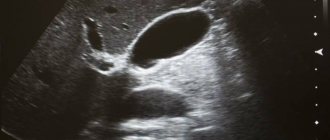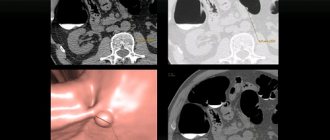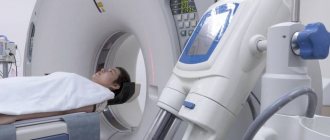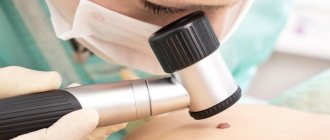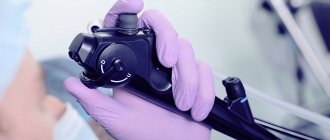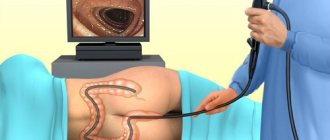Home » How to do a colonoscopy of the intestines
Today in medicine there is a huge range of diagnostic studies that are carried out to establish a diagnosis, to draw up an effective treatment plan and eliminate pathology. To determine the pathological condition and identify emerging tumors, medical workers perform a colonoscopy of the intestines.
What is a colonoscopy? We are talking about a diagnostic examination that visually assesses the condition of the digestive tract organs, detects the presence of erosion of polyps, ulcerative defects, inflammatory and infectious processes.
Diagnostics are carried out in a specially equipped room. To carry out the procedure, appropriate instruments are used, namely a colonoscope. This instrument consists of a fiber optic tube and a lighting component. The instrument contains a device that pumps air, which allows you to visually demonstrate the condition of the mucous membrane of the large intestine and identify defects.
Also, with the help of equipment, material is collected for histological examination. Medical professionals cauterize or remove small polyps. During a colonoscopy of the digestive tract, a healthcare professional inserts an instrument into the patient's anus through the lumen of the rectum. Gradually, the colonoscope is advanced along the intestinal lumen, while the equipment pumps air into the affected area. In this regard, the folds of the intestinal mucosa are straightened.
Diagnostic testing is carried out in both adult patients and children. Pediatric colonoscopy is performed using a special endoscope, which has a reduced diameter and length.
What does a colonoscopy show?
Endoscopists perform colonoscopy to visualize changes in the mucous membrane of the rectum, colon and sigmoid colon. Pathologies are diagnosed at the initial and advanced stages. Using a colonoscope, material is taken for histological analysis, the presence of polyps and ulcerative formations is analyzed. A medical expert identifies any pathological changes and assesses the extent of the pathology.
Diagnosis of the intestine is carried out exclusively by a qualified specialist, namely an endoscopist. In some cases, during the manipulation, a proctologist and gastroenterologist are present, who treat pathologies of the digestive system.
Why do this research?
Diseases of the large intestine (rectum and colon) have become increasingly common in the last decade. Many doctors, regardless of specialization, encounter the phenomenon of chronic constipation (colostasis) in their daily practice. Being, of course, most often a symptom of many other, not only proctological diseases, constipation in many cases becomes an independent syndrome that has no “apparent” cause. Today it is clear that chronic constipation plays an important role in the development of other lesions of the colon, including polyps and cancer.
At the age of 45–50 years, benign polyps often appear in the colon and begin to grow slowly, most of which are true glandular adenomas, precancerous diseases. For a long time they are completely asymptomatic and are detected only during sigmoidoscopy and colonoscopy. This often leads to a late diagnosis of colon cancer, because in the vast majority of cases these are stages of one process. Other very common diseases that doctors of various specialties encounter in their practice are functional intestinal dyspepsia, dysbiosis, irritable bowel syndrome and various forms of colitis.
Medical statistics also confirm the importance of colonoscopy. Mass examinations (screening) have shown that 25% of practically healthy adults are diagnosed with proctological diseases (every fourth practically healthy person). As with other diseases, outpatients outnumber inpatients.
Noteworthy is the fact of such a nonspecific condition, which is defined as colon aging syndrome, and its connection with certain diseases of the colon, including polyps and cancer. This syndrome is not determined by the age of the patient, but by the duration of functioning of the decompensating organ system, since intestinal pathology, as a complex therapeutic problem, often remains behind the scenes.
Indications for intestinal colonoscopy
There are a number of indications for which a patient is recommended to attend an intestinal colonoscopy. The proctologist determines the presence of indications. You should make an appointment for a colonoscopy in the following cases:
- gastrointestinal disorders, constipation and diarrhea;
- the presence of bloody discharge, mucous impurities and pus during bowel movements;
- painful sensations during bowel movements;
- colic;
- chronic diarrhea;
- the presence of polyps and growths;
- abnormal stool color;
- lack of appetite;
- nausea and vomiting;
- bloating;
- suspicion of a paraneoplastic process;
- Crohn's disease and ulcerative colitis;
- biopsy of the intestinal mucosa;
Colonoscopy is also performed when there is low hemoglobin. In this case, the attending physician determines the cause of the bleeding.
How to detect polyps
Intestinal polyps are usually discovered accidentally - during a colonoscopy, which is done for a routine examination or due to complaints of abdominal discomfort or bleeding.
During colonoscopy, it is removed if the polyp is not flat. It can then be removed with the colonoscope loop.
At the slightest opportunity, the doctor will not just pinch off part of the tissue for analysis, but will try to remove everything completely, because incomplete removal of the polyp will only intensify its growth.
Contraindications for bowel examination
Gastroenterologists identify a list of pathological conditions in which endoscopic examination of the large intestine is strictly prohibited or not recommended.
Contraindications include:
- infectious or inflammatory process at the acute stage;
- chronic peritonitis;
- early and late pregnancy;
- lactation period;
- heart failure;
- respiratory failure;
- blood pathologies;
- ischemic colitis;
- acute ulcerative colitis;
- anal fissures and hemorrhoids;
- paraproctitis at any stage;
Colonoscopy during pregnancy is absolutely contraindicated at any stage. Diagnostics have a number of side effects that can negatively affect the life of the fetus or the functioning of the digestive tract of the expectant mother.
Colonoscopy for hemorrhoids is performed, but advanced stage of pathology or increased size of hemorrhoids are considered contraindications. Before conducting an endoscopic examination, the endoscopist assesses the patency of the anal canal, analyzes the presence of hemorrhoids and the possibility of their reduction.
It is not advisable to diagnose the intestines in the presence of adhesions. Passing the endoscope into the rectum becomes more difficult. Female patients are advised to refrain from attending the procedure if they have menstrual bleeding. The best option is the middle of the cycle. If it is impossible to avoid the procedure, then endoscopy is performed on any day of the menstrual cycle.
To whom and in what cases is a colonoscopy prescribed?
Mass screenings of high-risk groups make it possible to identify intestinal diseases in the early stages. The categories that should definitely conduct such a study include workers in “sedentary” work (drivers, office workers, etc.), as well as blood relatives of patients with cancer and colon polyposis, who are at risk.
The patient is indicated for a colonoscopy for chronic abdominal pain, unexplained weight loss and increased fatigue, bleeding from the anus, chronic constipation, diarrhea and other intestinal problems.
How often is colonoscopy done?
Colonoscopy is considered the most informative and most accurate research method. The procedure has no side effects or complications after the procedure. Endoscopists claim that regular manipulation does not harm the body. It is recommended to be screened every two years in old age.
If there is a family history of cancer, you should regularly attend comprehensive diagnostics after forty years. Patients who have previously undergone surgery in the abdominal area should undergo a preventive examination every six months to avoid relapse or complications.
Recovery
Usually the procedure is performed in an outpatient setting. Therefore, the patient can leave the clinic as soon as the anesthesia wears off.
There are certain recommendations regarding recovery and more:
- You cannot drive or drink alcohol for 24 hours;
- Immediately after the procedure, it is recommended to walk around so that the gas leaves the intestines faster;
- It is recommended to rest during the day;
The doctor gives more specific recommendations, taking into account your condition and the nature of the procedure.
In case of fever, bleeding, or abdominal pain, you should consult a doctor.
Preparing for a colonoscopy
Before endoscopy of the large intestine, it is advised to listen to the doctor’s recommendations. To get an informative and accurate result, you should avoid eating fatty and salty foods, baked goods, and carbonated drinks. It is strictly forbidden to drink alcoholic beverages and smoke three days before the study.
Preparing for a colonoscopy includes avoiding foods that are high in fiber. The patient follows an individual diet, which is prepared by the attending physician. Most often, the diet consists of cereals, dietary broths, boiled meat and fermented milk products.
Immediately before the procedure, you must completely stop eating. You are allowed to consume the broth the evening before the test. On the day of the colonoscopy, the patient empties his bowels using laxatives. A few hours before the procedure, the patient has another bowel movement using a siphon enema.
To avoid a nervous state, it is recommended to drink a sedative at night.
Goals
During the procedure, the doctor may find in the patient:
- Polyps;
- Ulcers;
- Inflammation;
- Tumors.
In addition, by resorting to manipulation, the doctor can take a biopsy sample for examination, as well as perform therapeutic actions.
There is a recommendation that a colonoscopy should be performed at age 50. Everything else is individual.
Medical practice shows that most colon tumors are detected at mature stages, since diagnosis is carried out too late.
Early diagnosis allows you to identify precancerous diseases, which means you can start treatment on time. This is where colonoscopy comes to the rescue.
What tests to take before a colonoscopy
Before a colonoscopy, the patient is sent for laboratory tests and other studies. It is necessary to undergo a general clinical blood test, a bacteriological examination of stool, an analysis of stool for the presence of occult blood, and an analysis to determine the biochemical parameters of blood serum.
The patient takes with him a change of shoes, a diaper or sheet, and underwear intended for colonoscopy. You can buy underwear at the pharmacy. Fabric shorts are made from natural materials and provide comfort during the procedure. The shorts have a special slit in the anus area. You should also purchase wet wipes or paper towels.
Before the procedure, the patient demonstrates the results of laboratory and diagnostic tests to the attending physician. In some cases, you will need to do a cardiogram and x-ray.
Methodology
Diagnostic manipulation usually takes place faster than therapeutic procedure.
Sedation is used for patient comfort.
He is laid on his left side, his legs are bent, his knees are brought to his stomach.
The colonoscope is lubricated with Vaseline and carefully inserted through the anus, moving slowly.
To ensure a good view, the intestines are inflated with gas.
The image is shown on the monitor screen, the process itself is recorded.
Dermatoscopy
After examining the intestines, the colonoscope is removed.
Colonoscopy with anesthesia
In most cases, colonoscopy is performed without the use of anesthetic drugs, but sometimes specialists use painkillers or general anesthesia. To eliminate pain, superficial anesthesia is used. A probe is lubricated with anesthetic gel and inserted into the rectum. The affected area is numbed and the procedure becomes comfortable.
Colonoscopy can be performed under general anesthesia or while asleep. For a short period of time, the patient falls asleep, and the body is completely relaxed. Complete painlessness and comfort are guaranteed. Most often, general anesthesia is used if concomitant pathologies are diagnosed or there are polyps or adhesions that need to be removed.
Side effects may occur, so general anesthesia is used only in emergency cases when it is really necessary. Contraindications include advanced age or problems with the cardiac system.
Carrying out diagnostics under sedation is popular in medicine. This method guarantees painlessness, safety and comfort. Before the procedure, a special drug is injected into the patient’s body, which immerses the patient in a state of sedation. In this case, the person is conscious, but there is complete relaxation and calm. There are no side effects. The only disadvantage of colonoscopy under sedation is that it will take time to recover from this state.
Most patients attend endoscopic examination in advanced cases when the condition has worsened. The reason for this is the fear of pain and discomfort. Today medicine is developing. Medical workers use the best anesthetics, so even in advanced cases there is no pain.
A delicate problem
Very often, a trip to the proctologist is postponed until the last minute. And talking about any problems with the intestines is considered something shameful. But you need to understand that if you contact specialists in a timely manner, then diagnosing any problem will not be difficult.
In most patients, the imagination often works “in the wrong direction.” They have a distorted understanding of how this research is conducted. Many people think that they are in for torment and inconvenience, but medicine has long stepped forward in this aspect and has created all the conditions for complete comfort for patients.
What to do when a polyp is removed and histology does not show cancer?
No doctor usually says this, even in a paid clinic after polyp removal. This is a pity, because in the coming months after microsurgery this is the most important time to take care of preventing the risk of developing new growths.
Time doesn't heal here at all. Rather, it’s the other way around!
Here are typical comments under our video about polyps:
“There was an operation in November, but they didn’t warn me about anything, and the next day they sent me to work, although I just felt bad for three days. Is it possible to take this course now, after 3.5 months?”
“Hello, I had a polyp removed from my intestines in 2018, after 8 months. had a colonoscopy. Biopsy: pieces of the colon mucosa with edema and abundant lymphoid infiltration. What to do?"
And there are many of them...
The risk depends on age and genetics. It is known that colon and rectal cancer develops from adenomatous polyps in 90% of cases. (JG Guillem et al, 1988). And the older the person, the higher the risk of relapse. Thus, over the age of 50, polyps are found in 50% of people. Under the age of 60, colon polyps become malignant in 2-3% of patients, over 60 years - in 6-8% (L. Valenkevich, 1987). If relatives had intestinal cancer, then every fourth person has a risk of degeneration.
When you decide whether to pay attention to prevention recommendations or rely on “maybe”, you should also pay attention to the size of the removed outgrowths.
The risk depends on the size. With a polyp diameter of 0.5 to 1 cm, the risk of cancer ranges from 1% to 5%, with adenomas from 1 to 2 cm it increases to 50%, with larger polyps it is about 70%, almost all polyps with a diameter of 4- 5 cm are malignant (Y. Yoshida, T. Aisawa, 1984; N. Trapeznikov, A. Shine, 1992; R. Hesterberg et al, 1987).
Conclusion: if any growth is detected on the intestinal wall, it must be removed. Right two weeks after removal, start a course to prevent relapse and degeneration. If you read this article a year or two after your colonoscopy, it also doesn’t mean it’s too late. But in the first months the time is simply golden. Use it.
Accept:
“Immunity reboot program” for 2 months, subject to proper nutrition and do not forget to drink at least 1 liter of clean water per day. It already includes anti-inflammatory ingredients and supports local and general antitumor immunity and supports microflora.




